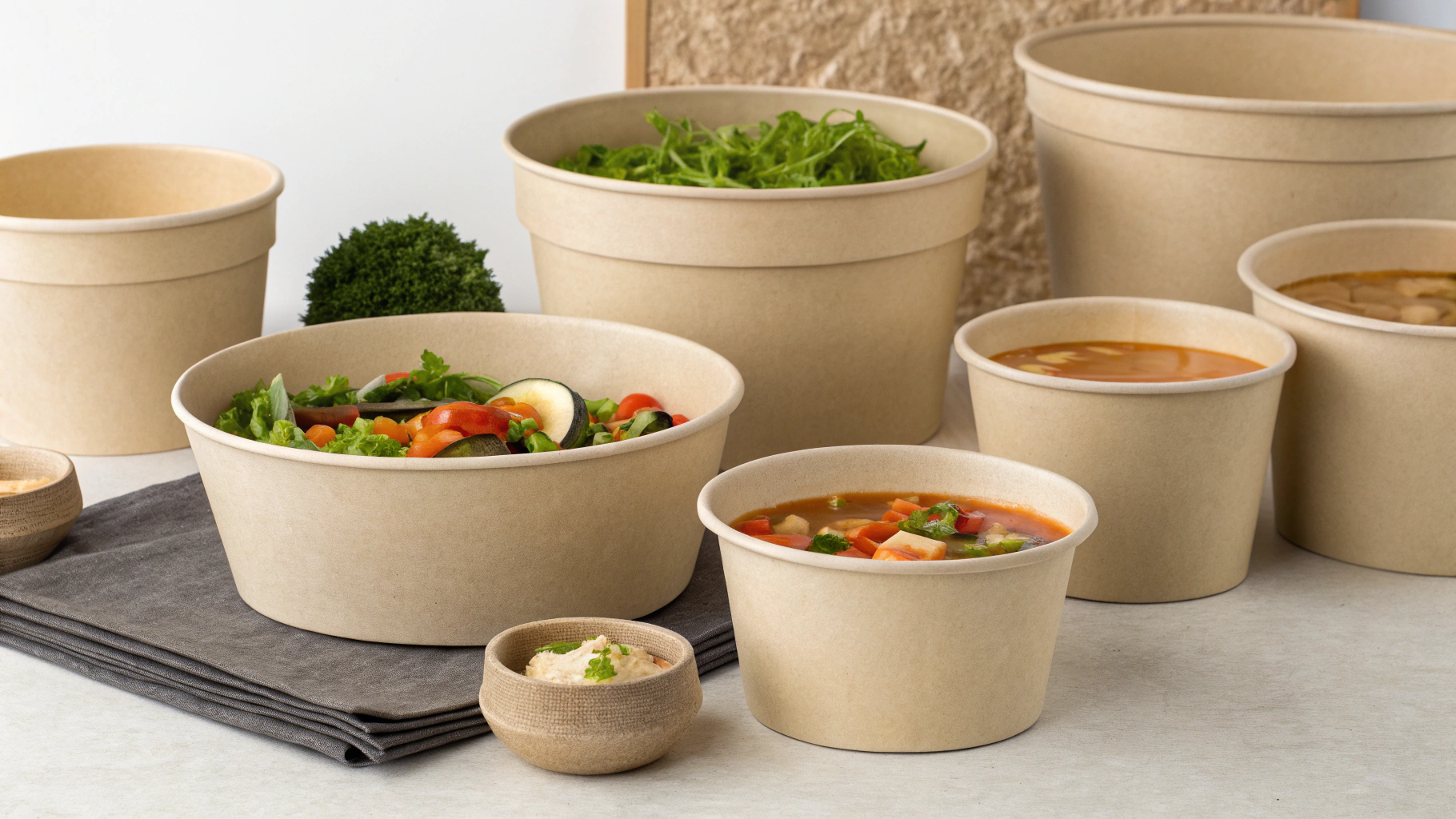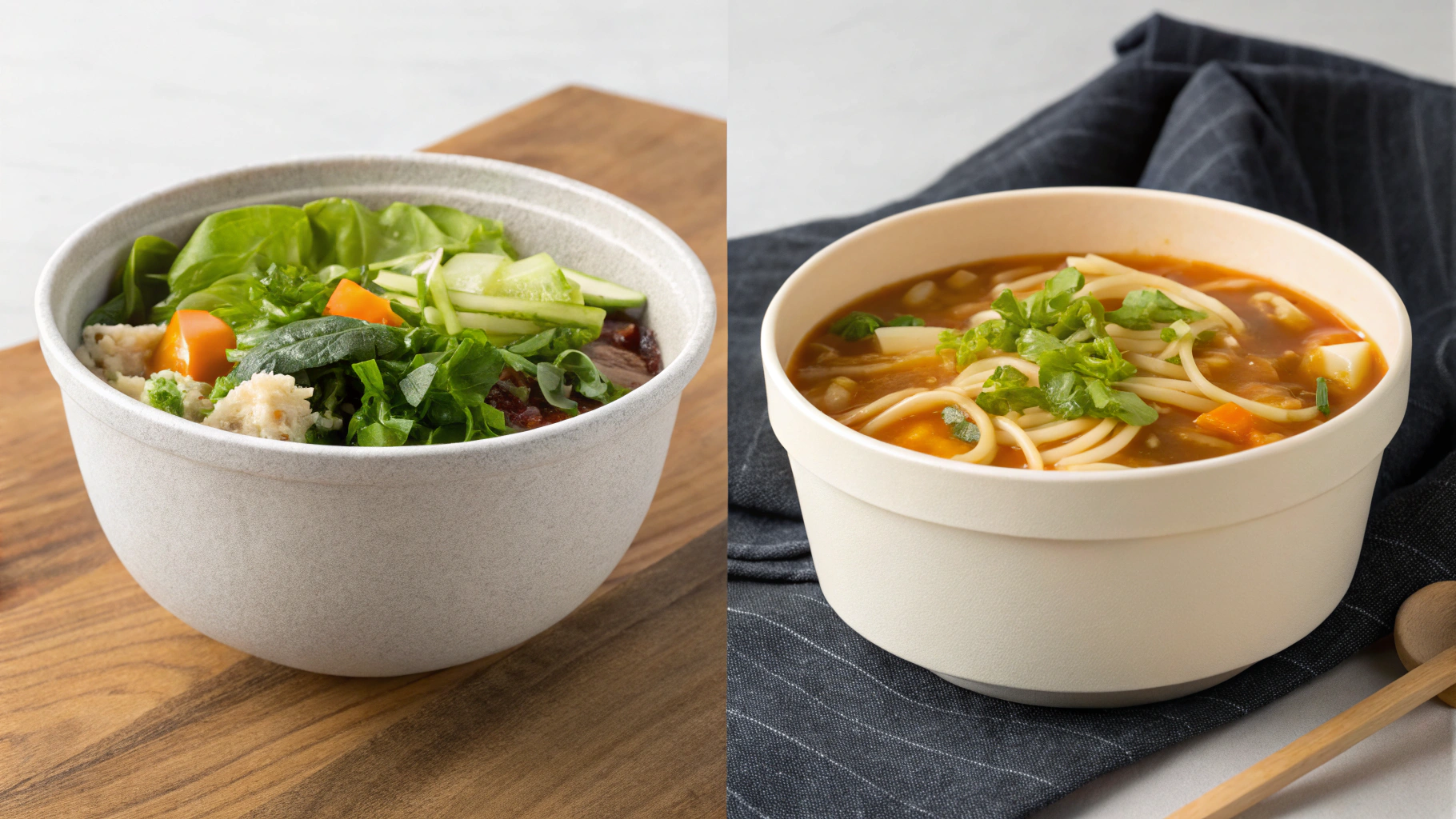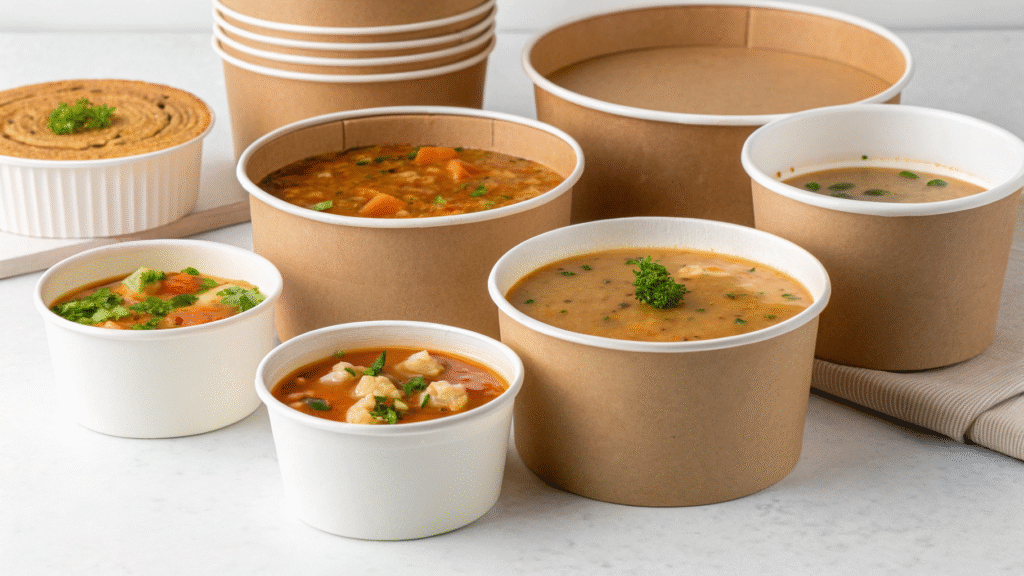Choosing the wrong soup bowl leads to leaks, unhappy customers, and waste. You need a reliable container that protects your food and your brand, but finding the right one is tricky.
To choose the right disposable soup bowl, you must first determine the correct capacity for your serving size. Then, you must select a structure with enough strength and insulation1 for the type of food you serve, whether it's scalding hot, oily, or frozen.

Making the right choice in packaging isn't just about avoiding spills. It's about delivering the best possible experience to your customer, from the moment they receive their order to the last spoonful. A good bowl keeps food at the right temperature and is easy to handle, while a bad one can ruin a meal and a reputation. In my 20 years in this industry, I've seen how these small details make a huge difference. Let's break down the two most important factors: size and strength, so you can pick the perfect bowl every time.
How do you choose the right size for your soup bowl?
Picking the wrong bowl size is a common mistake. A bowl that's too big wastes money and makes portions look small. A bowl that's too small can't hold a standard serving.
The best bowl size depends entirely on its use. An 8oz bowl2 is great for small sides, a 16oz bowl3 is the standard for single-serving main courses, and 32oz bowls4 are for large, shareable meals. Always match the capacity to your menu item.

Choosing the right size is the first step, and it's a critical one. You're balancing cost, portion perception5, and functionality. I've worked with countless clients to find their "sweet spot." For example, a café I worked with was using 12oz bowls for their hearty lunch soup, but customers felt it wasn't quite a full meal. We switched them to 16oz bowl3s, and sales increased because it was perceived as a proper lunch. To help you avoid this kind of trial and error, I've put together a table based on thousands of use cases I've seen over the years. This guide will help you match the right bowl to the right food.
Common Bowl Capacities and Their Uses
| Capacity (oz) | Approx. (ml) | Primary Use Cases | My Advice & Tips |
|---|---|---|---|
| 8oz | ≈ 240ml | Small Sides/Appetizers: Restaurant side soups, dipping sauces, small desserts like ice cream or yogurt, potato salad. | This is a "supporting role" size. It completes a meal set. Lids are usually simple flat or non-vented dome lids. |
| 12oz | ≈ 350ml | Standard Single Serving: A coffee shop's soup of the day, a small portion of congee, standard-sized desserts. | This size is versatile but might be small for a main course. Is your product a "taster" or a "filler"? |
| 16oz | ≈ 500ml | Golden Main Course Size: Most takeout noodle soups, rice porridge, single-serving salads, or spicy hot pots. | This is the most popular size on the market. If you're unsure, start here. The proportions are great for eating and packing. You must use a lid with a vent hole to release steam. |
| 26oz | ≈ 750ml | Large Portion/Light Sharing: Generous noodle bowls for one, soup for two, large salads, smaller family-style dishes. | The bowl becomes wider and shorter, like a basin. It's ideal for dishes with lots of solids like noodles, meat, and veggies, making them easy to pick up with chopsticks or a fork. |
| 32oz | ≈ 1000ml | Extra-Large/Family Share: Takeaway hot pot, dishes for 2-3 people like boiled fish, or large "basin" style meals. | These tall, large bowls demand high stiffness and a perfect seal. The weight of the liquid is significant, increasing transport risk. Always choose extra-thick paper and a high-quality lid6. |
Important Notes from My Experience:
- Diameter Determines the Lid7: Never try to match a lid based only on the ounce or ml capacity! A 16oz bowl3 from one factory can have a different top diameter than one from another. When you first buy or switch suppliers, you absolutely must test the bowls and lids together as a set.
- Actual Fill Volume: The stated capacity is the volume when the bowl is filled to the brim. The safe-fill capacity8—the amount you can put in without spills during transport—is usually about 85% to 90% of the stated size.
What makes a soup bowl strong enough for your food?
Your food is going to test the bowl. A scalding hot and oily noodle soup demands much more from a bowl than a cold, crisp salad does. A weak bowl can't handle the challenge.
The best bowl structure depends on the food. A standard single-wall bowl is fine for most hot soups. But for scalding, oily, or long-hold meals, you need a heavy-duty single-wall or a double-wall insulated bowl to ensure strength and safety.

The structure of the bowl is its armor. It needs to defend against heat, moisture, and oil. Over the years, I've seen restaurant owners try to save a few cents by choosing a thin bowl for a heavy, boiling soup. The result is always the same: the bowl gets soft and squishy, the lid pops off, and the customer has a terrible, messy experience. The small savings on packaging end up costing them a customer. To prevent this, you need to think like an engineer and choose the right structure for the job. Let's look at three common scenarios.
Scenario 1: Standard Hot Soups & Drinks
This applies to foods like tomato soup, chicken broth, oatmeal, or a coffee shop's daily soup. These items are hot but usually not at a full boil. For these, a Standard Single-Wall PE-Coated Bowl9 is your most cost-effective choice. A paper weight of 280-320 gsm10 is strong enough to stay firm and leak-proof for over 30 minutes. Be careful not to go for ultra-thin bowls below 250 gsm. They get soft instantly with hot soup.
Scenario 2: Scalding, Oily, Long-Hold Meals
This is for the tough stuff: freshly boiled ramen, spicy noodle soup, or takeout hot pot. These foods are nearly boiling, very oily, and sit in the package for a long time during delivery. Here you have two great options:
- Heavy-Duty Single-Wall Bowl11: This bowl uses thicker paper (330 gsm or more), giving it much better strength and heat resistance. It resists getting soft from heat and oil, preventing the lid from coming loose. It’s perfect for businesses that care about their delivery quality.
- Double-Wall Insulated Bowl12: This is the ultimate solution. An air gap between two layers of paper provides amazing insulation. This means customers can hold a piping hot bowl without burning their hands, and the food stays hotter for longer during delivery. It’s the strongest and most stable option, perfect for high-end restaurants.
Scenario 3: Cold Food, Salads, & Frozen Desserts
For items like fruit salad, pasta salad, or chilled noodles, a standard single-wall bowl is perfectly fine and cost-effective. But for frozen desserts13 like ice cream or slushies, a Double-Wall Bowl is a secret weapon. The insulation not only slows down melting but also prevents condensation from forming on the outside, so your customers' hands don't get wet and cold.
Conclusion
To choose the perfect bowl, first decide on the right capacity for your serving size. Then, test the bowl's strength with your food to ensure it performs perfectly.
Find out how to select bowls that can handle heat, oil, and cold while keeping food at the right temperature. ↩
See why 8oz bowls are ideal for sides and small servings, and how they fit into meal sets. ↩
Learn why 16oz bowls are the most popular choice for main courses and how they improve meal presentation. ↩
Find out why 32oz bowls are perfect for large portions and family-style meals, and how to choose the right quality. ↩
Understand how the right bowl size can influence customer satisfaction and perceived value. ↩
Discover how a secure lid prevents spills and maintains food temperature during transport. ↩
Avoid costly mistakes by understanding why lid fit depends on diameter, not just capacity. ↩
Learn how to prevent spills by filling bowls to the safe capacity rather than the brim. ↩
Discover why this cost-effective option works well for most hot soups and drinks. ↩
Understand how paper weight affects bowl strength, heat resistance, and leak prevention. ↩
See how thicker paper bowls handle scalding, oily foods without losing shape or leaking. ↩
Learn how double-wall bowls provide superior insulation and comfort for customers. ↩
Find out how to keep frozen treats from melting too quickly and prevent condensation. ↩
